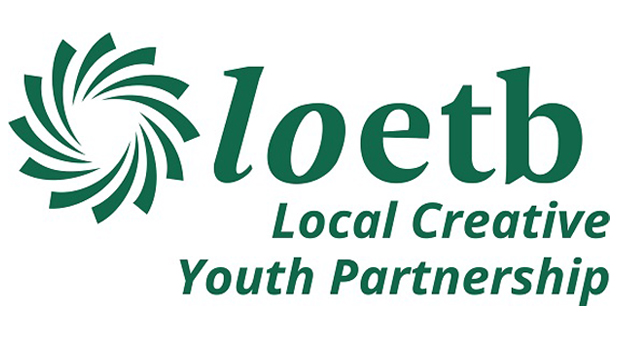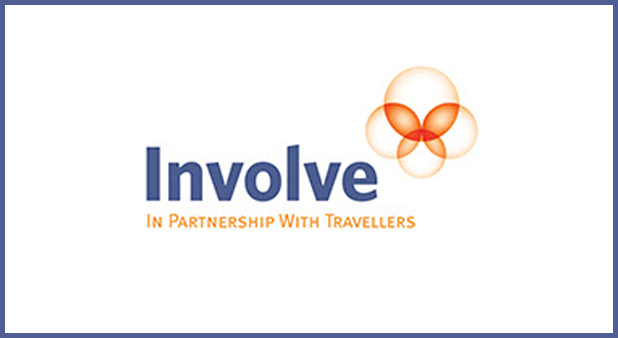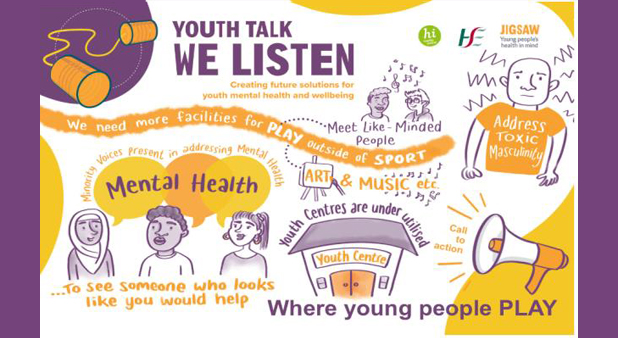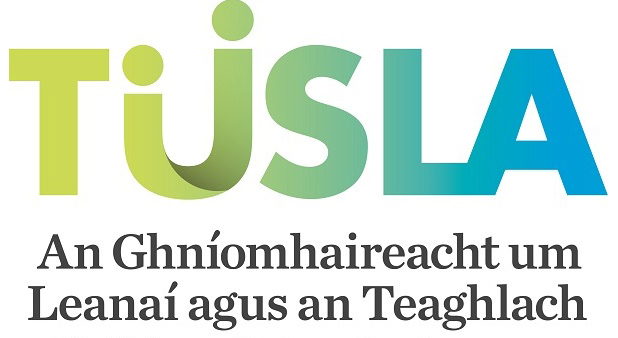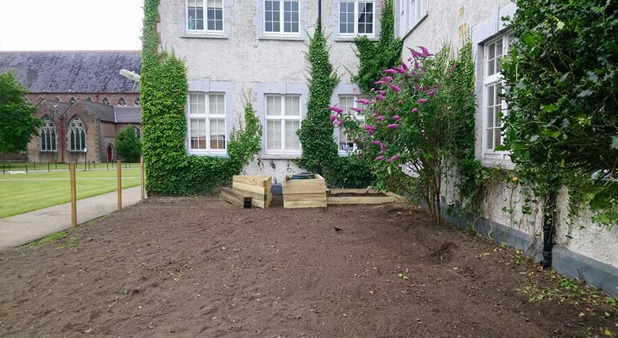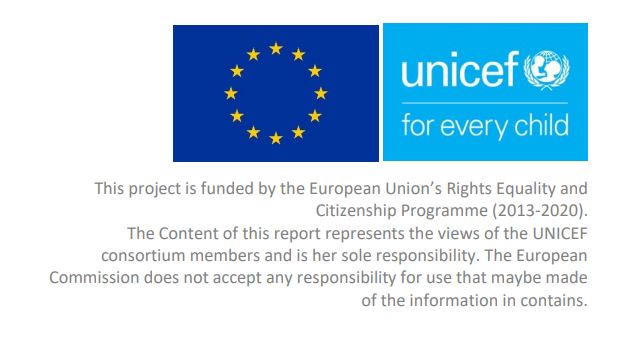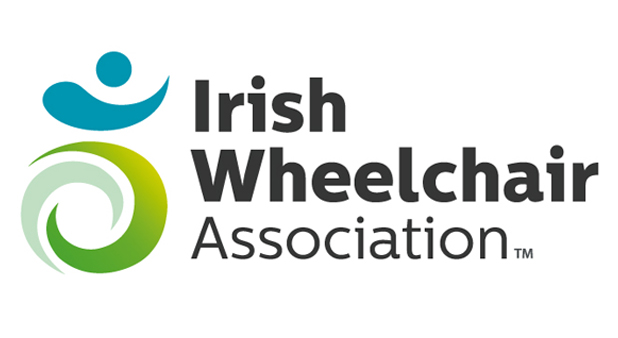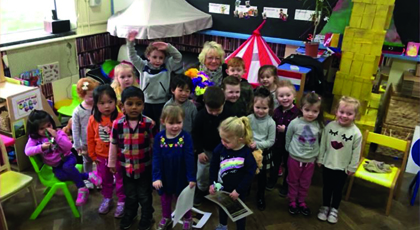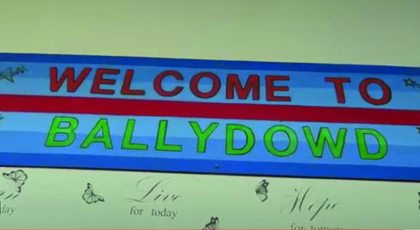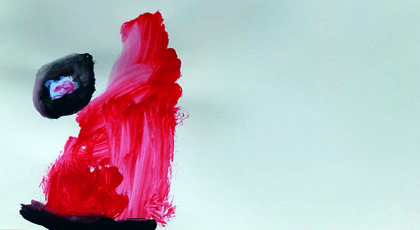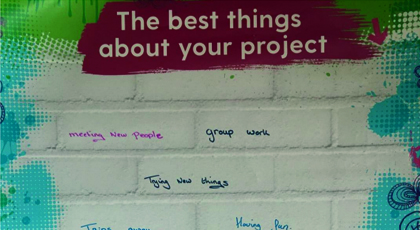The Voice of Children Who Experienced Childhood Domestic Violence and Abuse
How Barnardos involved children and young people who experienced childhood domestic violence and abuse in service and policy decision-making.

Background Information:
The project on which we involved children and young people in decision-making
Empower Kids
The topic on which we were looking for their views
Childhood domestic violence and abuse
The reason we wanted their views
We wanted to raise awareness and understanding of the specific experiences and needs of children and young people who experience domestic violence and abuse (DVA). There is a need to give these ‘seldom heard’ voices the opportunity in terms of the use of Space, Voice, Audience and Influence, to shape the development and delivery of frontline services addressing their needs. Encouraging children and young people in this way is crucial to ensuring services and policies are fit for purpose. While there is a lot of research available on the impact of DVA on children, we wanted to understand more about their own lived experience.
- We wanted children and young people to feel included, have had their experiences validated and their expertise recognised.
- We wanted to facilitate children and young people to give voice to their experiences and advise on how to better respond to their needs.
- We wanted to support a better understanding among service providers and policy makers about children and young people’s experiences, and enhanced collaboration in responding.
- We wanted to empower children and young people who have experienced domestic violence and abuse to feed into the development of a shared understanding of childhood domestic violence and abuse.
The decision-makers that facilitated and listened to their views
At Barnardos, Childhood Domestic Violence and Abuse (CDVA) project, we facilitated a multi-agency project participation project. Where 13 individual DSGBV support services volunteered to became part of the Empower Kids project and engage children and young people in their service through their keyworker system. The Empower Kids project team member services are: Cope Domestic Violence service Galway, Adapt domestic abuse services, Mayo women’s support services, Longford women’s link, Meath Domestic violence service, Daughters of Charity – Dublin Safer families, Women’s aid Dundalk, EPIC, Saoirse Domestic Violence services and Cuan Saor Domestic Violence service. Barnardos TLC KIDZ projects across North Tipp, Limerick/Clare, Cavan/Monaghan.
The decision-maker/s responsible for acting on their views
All members services of the Empower Kids project – which is facilitated by Barnardos.
The age of the children and young people
7 – 20+ years old.
Other relevant information about the children or young people (e.g. disability, ethnic background, social disadvantage, etc.)
All 30 children and young people had lived with domestic violence and abuse. At the time of their participation, they were engaged with a support service – either a community based Barnardos domestic violence/abuse service or a specialist domestic violence/abuse service. There was a mix of both male/female children/young people.
How the children and young people were ensured SPACE, VOICE, AUDIENCE and INFLUENCE
Space: How we ensured a safe and inclusive space to hear the views of young people 
| Things we considered | What we did |
|---|---|
| The space or setting where we got their views (this may include online settings) | We decided to engage children and young people in an environment that promoted physical and emotional safety at all times. We also felt due to the trauma that the children and young people may have experienced, a familiar environment was key in creating this safe space, typically this was in the service they engaged with regularly or in their family home. |
| How we identified the children and young people to be involved | Each support service engaged in the Empower Kids project initially identified children and young people who may be suitable for this work. We then took time to assess their suitability so that their participation did not compromise their physical or emotional safety in any way. |
| How we involved those who were directly affected by the topic | We engaged support services who work directly with children who have lived with domestic violence and abuse in the participation project. Each individual support service identified suitable children and young people for assessment and together we engaged over 30 children and young people who have lived with domestic violence and abuse in this consultation process. |
| How early in the process they were involved in decision-making | We involved the children and young people in decision making once they were engaged in the project after the initial consultation phase. This began at the creative output process, where we gathered their views and ideas to create the brief for the animation and poster. • More recently they have been involved in the deciding the direction of the work for 2022. |
| How the process was inclusive and accessible | We felt the best way to engage this cohort of seldom heard children and young people, was to facilitate their access either in their local area service or in the comfort of their own home. They already had a relationship with their keyworker, so this transition from support work to participation work, was seamless for many. We gave extra time and attention to be as inclusive to the individual needs of the children and young people as possible. |
| How we made sure they felt safe to express their views | We used a multi-agency approach, where all support workers had a specific expertise in the complexities and dynamics of domestic violence and abuse. This allowed us to ensure that safety and risk was always to the forefront of this participation work. We gave ample time in the early individual sessions reassuring them, creating safety/trust and answering any questions they had in as open and transparent way as possible. |
Voice: How we gave young people a voice in decisions
| Things we considered | What we did |
|---|---|
| How we informed children and young people about the topics on which we wanted their views | We identified with the children and young people that there is a lack of understanding of the lived experience and needs of childhood domestic violence and abuse nationwide. Each individual support worker used materials such as age-appropriate information videos and handouts with the children and young people to fully inform them of the topic on which we wanted their views and the purpose of the work itself. |
| How we made sure they knew their views would be taken seriously | We ensured each child/young person was aware of the purpose of the work, that it was their right to be heard and listen too, and that we were all working collaboratively to raise the visibility of childhood domestic violence at a local, regional and national level. We felt it was important that we fostered a culture of respect for the true, honest, and accurate views of the children/young people who engaged in the process throughout this work. We were transparent about what was happening at all times. |
| The methods we used to get their views | We designed open ended questions and vignettes for the children and young people to feedback on a certain topic. Depending on the individual child/young person, each individual support worker, selected from the following list of engagement tools to allow them to express their opinions and give feedback for those open-ended questions:
|
| How we made sure they could identify topics they wanted to discuss | Throughout both years, we kept the questions and topics very open and broad so that children and young people could choose what to feedback into the process. In 2020: We asked children/YP what domestic violence and abuse looks like to them. In 2021: The theme for the engagement process, was “What matters for children and young people who live with Domestic Violence and Abuse” – as a result of keeping it broad, common themes naturally emerged throughout all the feedback and the children and young people involved had ownership and control over what they wanted to contribute. |
| Please describe the topics and issues they raised | The children and young people provided us with a narrative about their lived experience of domestic violence and abuse. They gave us insight into the trauma of domestic violence and abuse, the impact on their day to day lives and their sense of agency as a whole. The children/young people identified the important role of their non-offending parent (mother in this case), their teachers/ schools, gardai and how they viewed their relationship with their parent who chooses to abuse. Having them held accountable was important to them and that this can take many forms. The importance of being involved in decisions that affect their lives was another prominent theme, and they provided valuable guidance to professionals to respond to children/young people living with domestic violence and abuse. |
Audience: How we made sure that there was an audience (decision-makers) for young people’s views
| Things we considered | What we did |
|---|---|
| How we developed a report or record of the children and young people’s views | The children involved helped us develop a more in-depth understanding of their lived experience. And we have created a children’s definition of childhood domestic violence and abuse. We also created multimedia outputs with the children and young people to capture their views and present to the public:
|
| How we checked back with them that their views were accurately represented | We regularly checked in (and continue to check in) with the children and young people involved on how their views were taken and if it was a true and accurate reflection of what they had said. Before any product is launched or goes public, all the children and young people involved have a last look over the final version, to ensure that it is reflective of their lived experience of domestic violence and abuse. |
| How we involved the decision-makers who are responsible for influencing change | During this work, each local area organisation in Empower Kids project involved their own local area decision makers in raising awareness of the lived experience of children and young people who have lived with domestic violence and abuse. At a national level, we engaged decision makers through our childhood domestic violence and abuse national advisory group and the childhood domestic violence and abuse community of practice.We also engaged with national services that the children and young people deemed important in their consultation, such as schools via the NCCA (National Council for curriculum and assessment), TUSLA (Child and family agency), ICGP (Irish college of general practitioners), Gardai (through the special protective units) and the Department of Justice (through the consultation for the 3rd National Strategy for Domestic Sexual and Gender Based Violence). |
| At what point we involved decision makers other than yourself in the process | We grew this project from discussions with and suggestions from the interagency collaborative networks that we are involved in at a local, regional, and national level. These are the Childhood Domestic Violence and Abuse National Advisory Committee and the Childhood Domestic Violence and Abuse Community of Practice. |
| How we and other decision-makers showed our commitment to listening to, and acting on children and young people’s views | The children’s views have been central to the work to date. We strived at all times to keep them unfiltered. The views of the children and young people have continuously shaped the themes emerging, the work plan for Barnardos CDVA project, the outputs for the Empower Kids project, and the course or direction of the work of the project going forward. The children have received an email from the Minister for Justice to congratulate them on the powerful animations they have produced to date. We keep the children and young people updated on the impact of their work, through regular update videos. |
| How we supported children and young people to play a role in communicating their own views to decision-makers | We are at the early stages of this work. To date, we facilitate the children and young people’s views through 1:1 engagement sessions with their keyworkers. This is then channelled through the Barnardos Childhood Domestic Violence and Abuse Project to reach decision makers. We have begun discussions with the children and young people about setting up a child and youth advisory panel for childhood domestic violence and abuse to create a more direct link between the children and young people themselves and decision makers. |
Influence: How we made sure that young people’s views were taken seriously
| Things we considered | What we did |
|---|---|
| How children or young people were given updates at key points in the development of the project | We created regular update videos from the National Coordinator of the CDVA project which were shared by the individual support services with the children and young people. |
| How their views were acted on by the appropriate decision-makers (what happened to their views) | The National Council for Curriculum and Assessment (NCCA) commissioned a webinar centred on the voice of and recommendations from children and young people who have lived with Domestic violence and abuse. This is available to all teachers for both the primary and secondary curriculum. The Irish college of General Practitioners (ICGP) is hosting the resources made by the children and young people alongside their domestic violence guidelines for GP’s. The 3rd National Strategy for DSGBV (domestic sexual and gender-based violence) has just been released, and already we can see the views of the children and young people reflected in the strategy. For example, strengthening the voices of the child in court proceedings. |
| How we continually checked back with children and young people about the ways we used their views with decision-makers | Over time, we are aware that some children and young people may for their own reasons, disengage in the work. However, this is not reflective of their commitment, more to do with their current circumstances. So, we do keep those who are engaged up to date as much as possible and they are aware of all developments. We try to have a continuing working relationship with the children and young people, and they are engaged in projects during the year. |
| How they were given full and age-appropriate feedback explaining how their views were used (or not) and the reasons for decisions taken | We keep the children and young people up to date on how their views were taken, where their information has reached throughout the process. We do this through their individual engagement sessions, and we create update videos to ensure the children and young people are clear on the impact of their views on decisions taken. |
| How we enabled them to evaluate the process throughout | They participated in 1:1 engagement sessions with their individual keyworkers giving us feedback on the process. We have created a children’s voices video with their feedback. |
| What the children and young people said in the evaluation | “It felt better doing this, that I felt heard, and that I can make a difference – even if I was little” “I know I’m not in that place anymore, and the effect of it, this is a good way to get it out” “You know no different, you think it’s normal, I like helping people – I know I am doing something good” “It is good that they are listening to our voice” “I wanted to do this and I know it might have be difficult, and hard, but if it helps someone else, then it’s worth it, If it can stop a person like me hurting like I did” “I’m so proud of it, and my shield, all I wanted to do is to make others happy and safe” “It’s good to have a voice in something, we don’t have a voice in much things” “I found it good because I can help other children” “Every age child has different experiences – It’s never too late to share our experiences” “There was a lot in the animation but that it was good to see it there especially around school” “I’m glad I took part in it cos now others out there know that other families go through this and they know now they aren’t alone” |
IMPACT
What changes were made because of children/young people giving their views?
We were asked to support the children and young people involved in the Empower kids project, to give their input to Ireland’s 3rd National DSGBV (Domestic Sexual and Gender Based Violence) Strategy and to comment on the initial draft strategy itself.
We collaborated with the Department of Justice to create a child friendly infographic of the objectives in the draft strategy, using relevant child friendly language, illustrations and colour.
We then consulted with the children and young people to hear their feedback on the draft strategy and to hear any other recommendations they have. We called this submission ‘I would like to give ideas for Ireland’ – based on one of the feedback comments.
The Strategy has just been released in June 2022, and the work of the Empower Kids project has been acknowledged as valued contributors. We feel we can also see the vision of the children and young people in the new Strategy, for example strengthening the voices of the child in court proceedings, enhanced safety in communities, provision of therapeutic services for children and young people and recognition of the child as a victim in their own right.
In the implementation plan, we are also delighted to see that the Strategy will continue to be informed by the voice of the child.
We also included the views of the Empower Kids children and young people in submissions for the:
- Family Law Strategy Consultation
- Public Consultation on the next Government Policy Framework for Children and Young People in Ireland
The important role that schools and teachers, play and could play in their lives of children and young people living with domestic violence and abuse featured strongly throughout this work. We reached out to the Department of Education’s NCCA (National Council for Curriculum and Assessment) and we were commissioned by the NCCA to create a webinar which is hosted on the NCCA’s website and accessible to all primary and post primary teachers. This webinar is focused on the work of the Empower kids project, in particular the animation ‘Hear me See me Keep me safe’ and the infographic Our Rights – Your Responsibilities. This can be viewed https://www.curriculumonline.ie/Junior-cycle/Short-Courses/SPHE/SPHE-RSE-toolkit/Preparation-for-Teaching/
The learning for our organisation
The key learning for our organisation from the process and outcome (end result) of involving children or young people in this initiative
This was a very empowering process for all those involved. Key learning from members of the Empower Kids project, have been:
- Creating the right environment to nurture participation from onset.
- Giving time to explaining everything to the children/young people involved so they were clear about the process, the commitment, and their potential for influence.
- How children and young people were ready to talk to us and tell their story. They were just waiting for the right person to do so at the right time
- The importance of asking children their opinions on matters that affect them.
- Giving children and young people any creative means to convey their message to its success from the onset. We worked well together as a team, and everybody is very committed to elevate the voices of the children and young people living with domestic violence and abuse.
If we were doing it again, is there anything we would do differently?Engaging children in the production and co design of the engagement materials earlier on in the project.
Supporting children to engage who are living in crisis and getting that balance right. To date the children and young people who have engaged in the project, are all post separation and living in a safe and stable home environment. We want to reach out to and engage children and young people who are living in crisis, or in refuge. We feel these children also have a lot to contribute and have a right to be heard. We are piloting this in our next project, keeping their safety and emotional needs to the forefront at all times.
We are also working together towards setting up a child and youth panel but will still maintain the individual consultation aspect of this work to ensure seldom heard children are heard.
All resources created by the children to date can be found:
https://www.barnardos.ie/our-services/childhood-domestic-violence-and-abuse/cdva-practioners-resources/cdva-what-children-young-people-have-to-say
*The Empower Kids project team member services Cope Domestic Violence
service Galway, Adapt domestic abuse services, Mayo women’s support services, Longford women’s link, Meath Domestic violence service, Daughters of Charity Dublin Safer families, Women’s aid Dundalk, EPIC, Saoirse Domestic Violenc e services and Cuan Saor Domestic Violence service. Barnardos TLC KIDZ projects across North Tipp, Limerick/Clare, Cavan/Monaghan.
